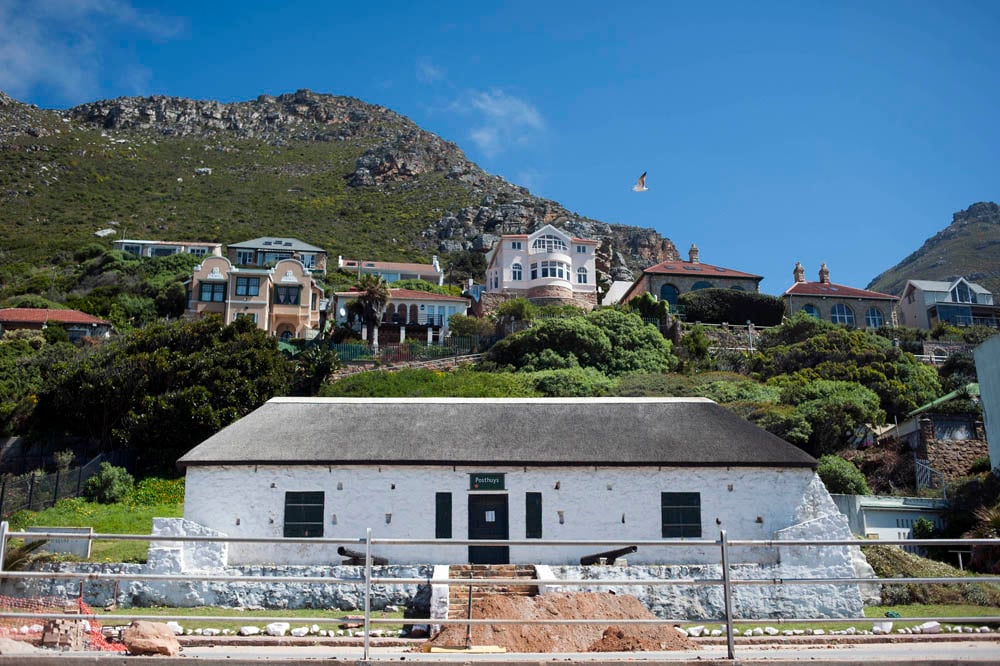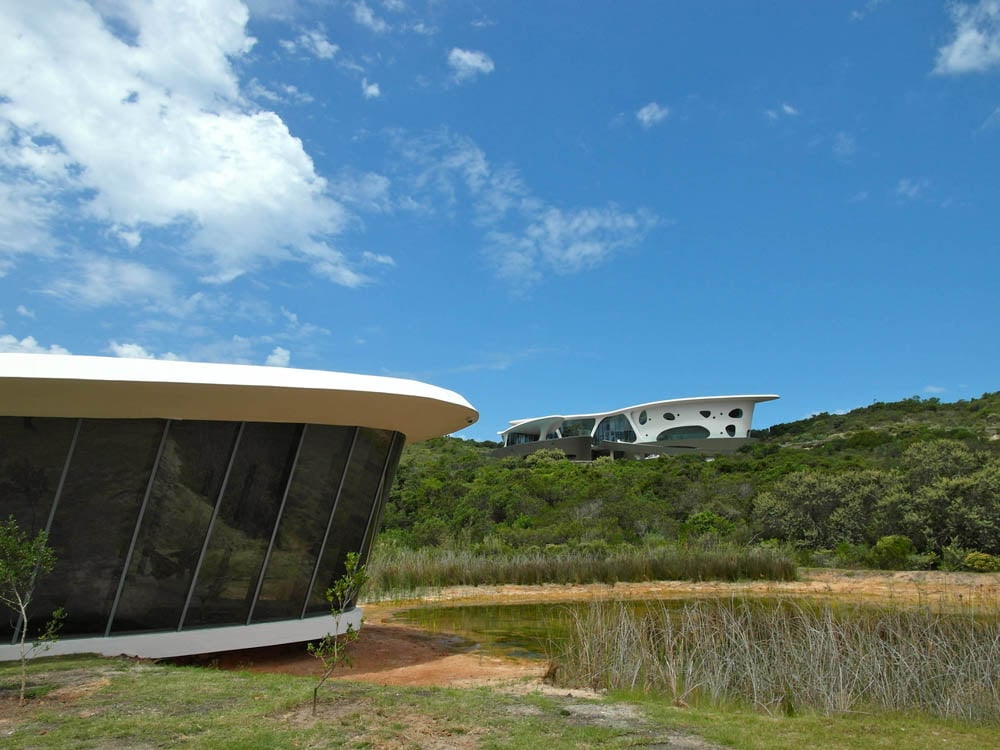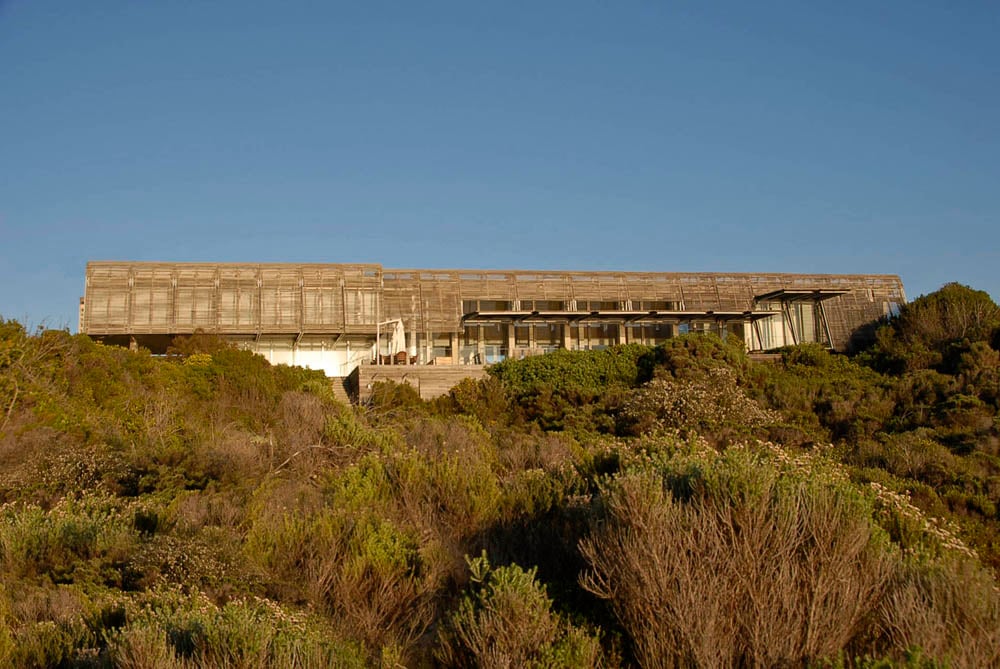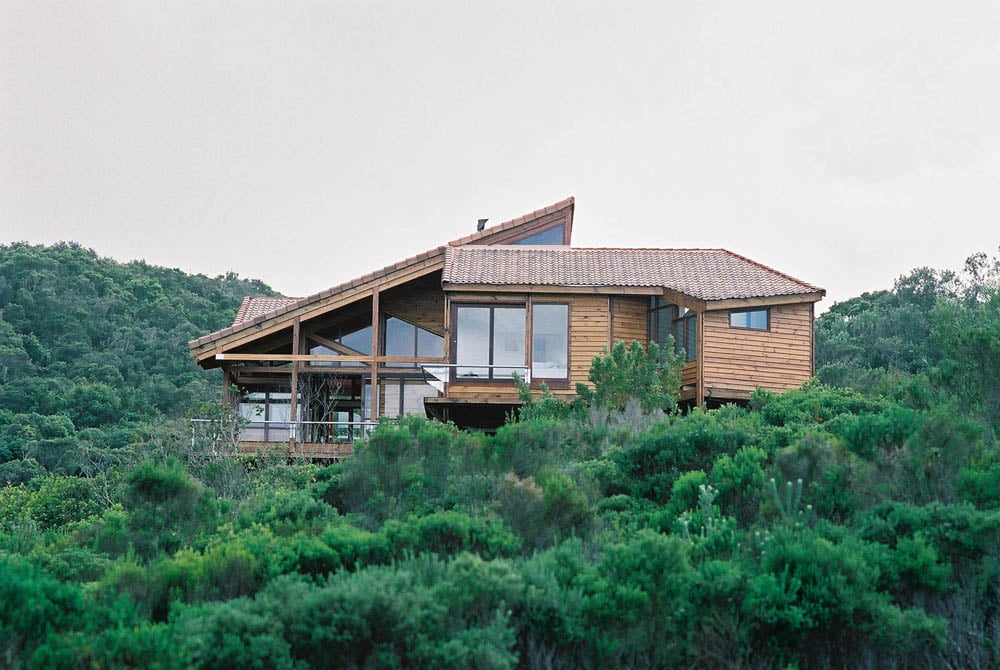You would expect more from a carnivore. The Muizenberg beach cottage where Cecil John Rhodes died in 1902 at the age of 49 is, of all things, modest. Originally built in 1673 as a military observation post, the dwelling (now a museum) has robust white walls and a thatch roof. When Rhodes lived there it had a tin roof.
Rhodes was no ascetic. The empire builder and oligarch first visited far-flung Muizenberg – a popular weekend retreat for Cape Town’s mink-and-manure set – in the 1880s, after entering politics. He later commissioned a lavish beach villa from his architect, Herbert Baker. But death came prematurely, leaving it to another larney, Sir Abe Bailey, to complete Baker’s design.
You don’t necessarily have to visit Muizenberg – which nowadays is more Hardluck than Hamptons – if you want to make to sense of South Africa’s aristocratic culture of leisure. Nor for that matter, discovered writer Njabulo Ndebele 17 years ago, do you even have to visit the coast at all.
Formerly the vice-chancellor at the University of Cape Town and now chair of the Mandela Rhodes Foundation, Ndebele visited a game lodge in northern KwaZulu-Natal in July 1997. The anaesthetised reality of the “leisure sanctuary” troubled him.
“What does it mean to use the vacation house as a vantage point for which to look down on others, when we have yet to prove that the house belongs to us and that we are its rightful owners, when we still live in an environment in which we are the ones being viewed?” asked Ndebele in his 1999 essay ‘Game Lodges and Leisure Colonialists’.
His question received scant attention in the popular media at the time, says Ndebele now. Perhaps 1999 was too soon for the culture of wealthy white leisure to be placed in the dock. Is there ever a right time to ask tough but fair questions?
“As I write, the landscape of apartheid is reproducing itself with a vengeance,” wrote Ndebele in 1999. “Townships are bursting with informal settlements, reinforcing old dichotomies in the landscape.”

Cecil Rhodes’s Muizenberg beach cottage, which is now a museum, was originally built in 1673. (David Harrison, M&G)
Fifteen years on and it is not only informal settlements that reproduce the landscape of apartheid, but also a growing number of ever more opulent beach homes along the country’s coastline. As in the time of Rhodes and Muizenberg, these power retreats are typically concentrated around particular addresses, notably Nettleton Road in Clifton and Beachy Head Drive in Plettenberg Bay.
Routinely celebrated in dwelling magazines and architectural journals, often for good reason, these idiosyncratic and usually very singular getaways remain somehow exempt from critical scrutiny. They are treated as sacred objects devoid of context. Or am I straining at things? Is it possible to think of the beach home not only in terms of its aesthetics, but also as an underlying ethic?
For all his wealth and power, Rhodes was a man of conventional tastes. In her 1989 book Historical Buildings in South Africa, architectural historian Désirée Picton-Seymour tells how Rhodes, when briefing Baker on his Muizenberg villa, instructed his architect to create “a great high terrace-wall, designed so that from the house and stoep the public road would be hidden”. Rhodes didn’t want to be gawked at by plebs – as was possible at his cottage – whenever he took in the “sweep of the blue sea and rhythm of white surf, and the two far-off mountain promontories”.
Apex predator
Being stared at by passers-by is something that Julian Treger is also very familiar with. Johannesburg-born Treger (53) isn’t an oligarch, although he is an apex predator and a captain of industry.
In 1993, armed with an MBA from Harvard Business School, he co-founded Active Value Advisors, one of the United Kingdom’s first activist funds. The fund’s business model – it targeted underperforming companies, acquired stock, and then actively lobbied for management restructuring – brought infamy and profit in equal measure. Treger’s partner, attorney Brian Myerson, once described their business as the “Rentokil of fund management”.
Since 2005, Treger, whose family immigrated to Zimbabwe from Lithuania in the late 19th century, has headed up Audley Capital Advisors, a fund with a particular focus on mining. In 2010 he brokered a $3.3-billion sale of Canadian firm Western Coal to Walter Energy.
Variously described as “opportunistic” and a “hit-and-run” investor, in 2011 Treger told the Telegraph: “You have to have had kills. You need to take people down. Barking is just not good enough.”
In person, Treger is easy-going and without airs. He is also, in a laconic kind of way, funny. Perhaps the assassin in him stays in London whenever he visits the Eden District.
“My wife said she wanted a beach cottage,” says Treger. We are seated on a wooden deck overlooking a part of his 22-hectare beachfront property in Keurboomstrand, just north of Plettenberg Bay.
Cottage is a poor noun for the asymmetrical three-storey waveform structure with a “meandering roof” that Treger had built on a dune overlooking the Indian Ocean.
“Was she satisfied with the result?” I ask. “She says it’s a bit big,” smiles Treger. Visitors, he adds, find it takes a while to adjust. “It is bit bewildering initially.”
London local
Treger has dark eyes and receding hair that he neatly combs sideways. Despite living in London for over two decades he still speaks with a local accent.
He says the house, his first building project, was never intended as a loud statement and diversion for spectators. Initially, he planned to build closer to the beach, setting the house in a subsidence among the coastal-dune fynbos. The local town office thought otherwise. He was eventually pushed back to the furthermost dune to lessen his home’s impact on the ecologically sensitive terrain.
Now visible from all sides, Treger’s museum-scale house has taken on an extrovert character. Cars routinely stop. “The locals have all sorts of names for it: first it was the teapot, then the spaceship,” he sighs.

The asymmetrical three-storey waveform structure that Julian Treger built on a dune overlooking the Indian Ocean at Keurboomstrand, north of Plettenberg Bay.
Treger’s house is nominally the work of architects Silvio Rech and Lesley Carstens. Best known for their deluxe African resort architecture, including Jao Camp in Botswana’s Okavango Delta, Rech initially proposed a “quiet two-storey” design in keeping with the trim resort modernism popular across the country. Treger had other ideas.
Seven years on and some two dozen design iterations later – including many computer models generated by junior architect Donald Takura Changwa – Treger’s beach house found its final form. “K Cottage”, as it has been christened, is an exuberant homage to the curvilinear optimism of mid-20th-century modernism.
Although the fluctuating coastal line is an obvious reference for what Treger refers to as his home’s “organic and curved” form, it also explicitly references the formal elegance of Finnish-American architect Eero Saarinen, in particular his TWA Flight Centre at JF Kennedy Airport in New York.
Other important inspirations were Brazilian architect Oscar Niemeyer, known for his organic modernism, and the brash Californian homes of John Lautner (whose 1963 concrete hillside home for Sheats Goldstein has featured in The Big Lebowski and a pop video for Snoop Dog).
“In a way the house links to historic views of futuristic houses,” says Treger, a trustee of the Design Museum in London. “It’s no coincidence that the typeface of the exterior signage is from Stanley Kubrick’s 2001: A Space Odyssey and the interiors reference what I think was some sort of heavenly place in that movie.”
Droll humour
Treger’s droll sense of humour again emerges when he explains why he named his zany beach house a cottage. The word cottage, he says, is a winking reference to the habits of 19th-century American railroad barons, notably Henry Flagler, who spent his winters in a large Victorian-style house known as Sea Gull Cottage in Palm Beach.
K Cottage has a strict no-shoes policy, which is apt for a home that is both a sanctuary and a museum. The large double-volume entertainment area at its centre includes a collectible Tom Dixon metal pylon and glass-top dinner table from 1993 and a series of elongated plastic benches by Iraqi-British architect Zaha Hadid (similar pieces have fetched between R800?000 and R1.4-million at auction).

It is difficult for passersby to ignore ‘African Bank House’ at Rooi-Els. (David Harrison, M&G)
By contrast, the art is local and includes work by mid-century masters Douglas Portway, Cecil Skotnes and Edoardo Villa.
And the cost? Treger is, let’s say, philosophical. “Financially, is it over-capitalised in its context, or is it cheap for a globally iconic home?” he asks. “It is what it is,” he later tells me. “When I watch Grand Designs they tend to focus on the theatrical and disastrous, people who don’t know what they are getting themselves off for. Maybe we started with the wrong budget, but it came in under budget.”
For most people, the word beach house might suggest isolated splendour. For a lucky few it means that plus luxury. For Mfundi Vundla, owner of Morula Pictures and creator of Generations, the country’s longest-running TV drama, a beach house means trouble.
“A standalone home on the sea is too much work,” says Vundla (67), who like Treger also has an American university degree. “The sea, wonderful as it is, corrodes. This can be costly.”
Vundla’s compromise: an oceanfront apartment in Bordeaux Building, a trim, modernist residential block in Sea Point designed by architect Eddie Albert.
Penthouse apartment
Vundla’s decision to buy a lock-up-and-go penthouse apartment in Cape Town has less to do with tightfistedness than the totality of his biography.
Raised by a father who was a clerk at Crown Mines Hospital and a nurse mom, he grew up in standalone homes, the first a three-room “township matchbox”.
Two years after he was expelled from Fort Hare for political activism in 1968, Vundla went into exile. He spent 21 years in the United States, where he received a master’s degree in education and campaigned as an ANC member.

Clifford Elphick’s concrete and wood masterpiece in Plettenberg Bay.
In the 1980s he started writing theatre pieces. His 1987 drama A Visitor to the Veldt has a black Vietnam veteran meet up with two exiled liberation fighters from South Africa. A chance meeting with writer and producer David Milch, of NYPD Blue and Hill Street Blues fame, allowed Vundla to transition into TV.
It was also in the US that Vundla first started living in apartments, as well as engaging in recreational travel. “I got to see a lot of the US and Canadian West Coast,” says Vundla, a self-assured man with a clean-shaven head and keen interest in art. While living in Los Angeles he started exploring Big Sur, Monterey and Carmel, and later ventured further north, up to Oregon, Washington State and British Columbia. “The Pacific Coast Highway exposed me to the dramatic dialogue between coastal terrain and the Pacific Ocean.”
This may read as benign fluff. It isn’t. At stake is here is the prized local concept of leisure, which until very recently was unequally distributed.
“There were very few places black people could go,” remembers Ndebele. He recalls the “existential trauma” that often accompanied the simple act of travelling with family to friends or relatives, which he says is what passed as holidays then.
“You didn’t know if you would reach your destination and be imprisoned. You didn’t know if you would be stopped and the whole family told to get out the car, your parents humiliated in front of you. Travelling in those days was a hazardous undertaking. All the beauty of nature was outside of my experience.”
Predictable complexion
Vundla was, to an extent, spared these indignities. When he returned to South Africa in the early 1990s, he choose Sea Point over Camps Bay for the simple fact that it has less wind. “Sea Point is also less pretentious, more real, if you know what I mean. It has more working-class people walking the streets than in, say, Bantry Bay or Clifton.” Which is Vundla’s polite way of pointing out that most leisure enclaves locally – be they summer homes along the Indian Ocean or bush lodges in Mpumalanga – have a predictable complexion.
Not so long ago, a fabulously wealthy businessman sent a brief out to a group of shortlisted local architects. He wanted to build a holiday getaway on a promontory in Clifton overlooking the Atlantic. His brief included a key design guideline: “I want Iron Man meets James Bond.” The house is currently under construction.
This anecdote, picked up while researching Treger’s home for a British design monthly, got me wondering. Why do architects build holiday homes? What’s the reward?
It’s not really fiscal, says architect Ilze Wolff, who spends every other weekend in a retrofitted worker’s cottage owned by the Wolff family on the outskirts of Bonnievale. In part, this is because of the duration of a home build and the idiosyncratic technicalities involved.
Some practitioners, notably Stefan Antoni and Greg Wright, both Cape Town architects, have established credible careers as residential architects with a specialisation in sea-facing properties. Most architects don’t.
According to Wolff, there is an upside to working on holiday homes – and private residences more broadly. “It offers architects an opportunity to think about innovation, in terms of the craft of architecture,” she says. “It is also an opportunity for material innovation.”
Career move
As examples of this interplay between small-scale innovation and bigger career trajectories, Wolff singles out Peter Rich’s wood cottage in Wilderness, and Andrew Makin and Janina Masojada’s concrete and wood masterpiece for diamond magnate Clifford Elphick on Beachy Head Drive in Plettenberg Bay.
Treger points to English architect Seth Stein’s beach home for Lucille Lewin, also in Plett. I would add Gawie Fagan’s sunken beach home at Paradise Beach in Langebaan, a tour de force of vernacular modernism, and also the skeletal steel and wood getaway designed by Durban architect George Elphick on a rocky headland in Rooi-Els and known by locals as the “African Bank House”.
(According to a recent Sunday Times article, the property is owned by Upbeatprops 167, which until recently “listed as one of its two directors Leon Kirkinis, who resigned as CEO of African Bank [in August] after steering the unsecured lending giant into the dust”.)

Peter Rich’s wooden cottage in Wilderness.
Architect Don Albert, best known for his striking Millennium Tower at Durban harbour, agrees that, “in general, houses are indeed great incubators of ideas that can be tried out at a smaller scale, with less pressure, but which can be capitalised on later.
“Many great architects use experimentation at a domestic scale and then implement new ideas, details or materials into larger projects to extend their oeuvre – and of course [they] can profit from that ultimately.”
But beyond this, adds Albert, who now lives in Bali, he is doubtful that beach homes can offer any real substantive insights into wider issues around architecture and society.
“In principle there is nothing unethical about having a second home, or more, but the devil is in the detail of how it fits into a broader context. Is it ecofriendly? Does it encroach on public property or the Admiralty Reserve? Does it block views? Does it block rights of way?”
‘Ethics and aesthetics’
“I think architecture is about both ethics and aesthetics,” concedes Treger, when I bring up the issue in an email months after our first meeting. But, he adds, the issues of ethics are “overexposed” in the country right now.
For his part, Albert is unconvinced by Ndebele’s argument.
“I am really battling to see any causal or moral connection between township housing – or the lack thereof – and the phenomenon of a beach house, which is a worldwide thing since classical times and a reasonable human desire for those that can afford them,” writes Albert after I send him an excerpt from Ndebele’s essay.
“I get what Ndebele is saying, but it is simplistic, presumptuous, if not racist,” he offers. “People use beach houses to look out across the sea at no one, to recharge their batteries, not to look down on people. It’s absurd. The point is people want to be by the sea, and if they can pay for some privacy and safety while they are at it, why not.”
Ndebele, who has no real truck with the idea of a second home – be it a flamboyant beach home or whitewashed Karoo bolthole – agrees with Albert, up to a point.
“If it is the product of honest labour, if there was no theft or corruption, it is a legitimate thing to have [a second home] because you have worked for it,” says Ndebele, who prefers to holiday peripatetically than visit his second home in the Valley of a Thousand Hills.
“We live in an extraordinarily beautiful country, which one wishes more people could have the ability to appreciate and access what it offers.”
‘Eurocentric leisure’
But, he insists by way of a general point, the broader concept of leisure is not exempt from scrutiny.
“The administration and content of leisure in this country is very Western and Eurocentric,” he says without any hint of bitterness. A pragmatic thinker, Ndebele says that this is the outcome of white South Africans making and doing as they learnt, with what they have grown up with.
“The bigger challenge is entrepreneurial, especially amongst the disenfranchised. Since 1994, how have new entrepreneurs who are nonwhite used the opportunity to reinterpret leisure?”
A tentative answer: haphazardly. Many are still negotiating the complex primary residence, a place where leisure is a far-off concept, and a beach house is something you only ever read about.